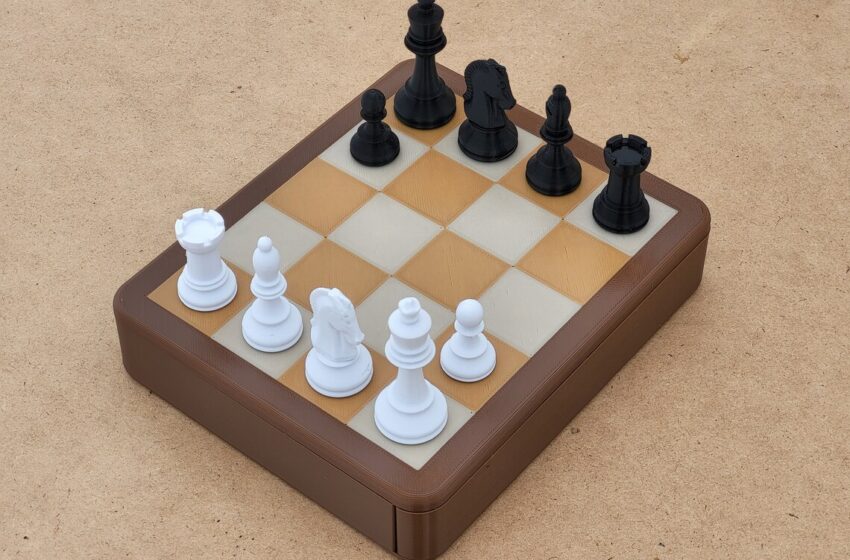MiniChess is an adaptation of the traditional game of chess where it is simplified with a smaller board and adapted rules. The games are designed to simplify and streamline the experience making it ideal for beginners, children and those looking for a quicker chess variant. Though it retains the essence of regular chess, MiniChess reduces the board size and the number of pieces. This makes the games fun but also very educational to play to better understand the basic rules and fundamentals of Chess.
What is MiniChess?
MiniChess refers to a variety of chess variants that are played on smaller boards, typically ranging from 3×3 to 7×7 grids (as opposed to the standard 8×8 chessboard). These smaller boards are used to simplify gameplay and reduce the number of pieces and squares, making the game more approachable for players who might find traditional chess intimidating or time-consuming. Further more it is a great to learn and practice the use of the chess pieces without having to go through a full classic chess game. MiniChess was created to make the game of chess more accessible, especially for younger audiences and beginners. The compact design helps new players grasp the rules without being overwhelmed by the number of pieces and the intricacies of long games. This concept has also been embraced as an educational tool, as it simplifies key elements such as:
- Basic piece movement
- Opening theory
- Tactics and checkmate patterns
Moreover, it offers a quick play alternative for chess lovers who might not have the time to invest in a full-length game.
Popular MiniChess variants
There are many types of MiniChess with each their own unique way of playing but to help you start this here are a couple of the most popular types that we have also added to our chess game types page.
- 3×3 board (Knight Court)
- 4×4 board (Silverman Chess)
- 5×5 board (Baby Chess)
- 6×6 board (Microchess)
- 7×7 board (Omega Chess variant)
Each variant retains core rules of chess but scales down the complexity, offering a faster and often more tactical game.
Key rules and differences in MiniChess
Although MiniChess rules are based on traditional chess, MiniChess is a simplified version of chess but there are some notable differences due to the reduced board size:
- Fewer pieces: The exact number of pieces varies depending on the version of MiniChess being played, but most formats include fewer pawns and occasionally omit the more complex pieces, like the queen.
- Modified opening setups: Since the board is smaller, the starting position of the pieces is often adjusted, with pawns covering only a portion of the board and the back rank consisting of rooks, knights, and kings.
- Quicker checkmates: With fewer squares and pieces in play, games are shorter, and players must think tactically right from the opening.
- Simplified endgames: Endgame scenarios are more direct, which helps players quickly understand important concepts like king opposition and pawn promotion without needing extensive calculations.
Benefits of playing MiniChess
As mentioned before there are apparent benefits to play MiniChess:
- Learning Tool for Beginners: MiniChess helps new players understand the game more quickly without feeling overwhelmed by the full 64-square board. The smaller size allows beginners to focus on mastering how individual pieces move and interact.
- Faster Games: A traditional chess game can last anywhere from 30 minutes to several hours, while MiniChess games tend to be much shorter, often ending in 10-15 minutes. This makes it perfect for quick breaks or rapid learning sessions.
- Fun and Engaging for Kids: Children often struggle with the length and complexity of standard chess. MiniChess simplifies the learning curve, making it more fun and engaging for young players to build confidence and interest in the game.
- Strategic Thinking: Despite its smaller scale, MiniChess still requires deep thinking and tactical precision, allowing more experienced players to sharpen their skills in a condensed format.
Educational use of MiniChess
MiniChess has gained popularity as an educational tool, particularly in classrooms or youth programs. By scaling down the complexity of traditional chess, MiniChess makes it easier for educators to teach children the basic principles of strategic thinking, problem-solving, and pattern recognition. Several programs use MiniChess as a stepping stone to full-scale chess, gradually increasing the complexity as players grow more comfortable with the game.
In fact, educational organizations like the MiniChess Foundation have implemented MiniChess in schools to enhance cognitive development, particularly in developing countries. Their program blends fun gameplay with fundamental educational principles, teaching children not only chess but also mathematics and logical thinking.
So to wrap up this MiniChess is simplified chess and it is a great way to start learning and teaching chess to others. It is a fun fast and a quick way to better understand the rules and to learn how the pieces move on the board. Give it a try, I am sure you will love it.

